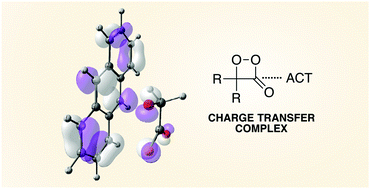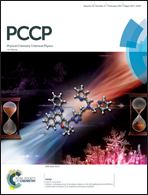Mechanism of activated chemiluminescence of cyclic peroxides: 1,2-dioxetanes and 1,2-dioxetanones†
Abstract
Almost all chemiluminescent and bioluminescent reactions involve cyclic peroxides. The structure of the peroxide and reaction conditions determine the quantum efficiency of light emission. Oxidizable fluorophores, the so-called activators, react with 1,2-dioxetanones promoting the former to their first singlet excited state. This transformation is inefficient and does not occur with 1,2-dioxetanes; however, they have been used as models for the efficient firefly bioluminescence. In this work, we use the SA-CASSCF/CASPT2 method to investigate the activated chemiexcitation of the parent 1,2-dioxetane and 1,2-dioxetanone. Our findings suggest that ground state decomposition of the peroxide competes efficiently with the chemiexcitation pathway, in agreement with the available experimental data. The formation of non-emissive triplet excited species is proposed to explain the low emission efficiency of the activated decomposition of 1,2-dioxetanone. Chemiexcitation is rationalized considering a peroxide/activator supermolecule undergoing an electron-transfer reaction followed by internal conversion.



 Please wait while we load your content...
Please wait while we load your content...